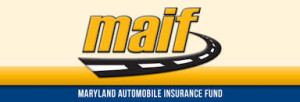For those of you who do not practice in Maryland or don’t handle car accident cases, the Maryland Automobile Insurance Fund is a unique to our state creature. It is a state-owned insurance company that insures high-risk drivers. Most other states just require insurance companies to insure high-risk drivers if they want to sell car insurance in their state.
I guess, at least in 1972, Maryland was feeling a little libertarian and decided rather than force its bad drivers on other insurance companies, that it would just build its own. To my knowledge, a total number of zero states followed suit. (Someone correct me if I’m wrong.) Of course, once you build a state agency, there is an unwritten rule that you can’t kill it.
But maybe MAIF is committing suicide or the free market is killing it. According to the Maryland Insurance Administration, MAIF had 6.39% percent of the private passenger auto insurance market in 2003. But MAIF’s market share decreased by more than half by 2008, falling to 2.85%. The MIA thinks this is because private passenger auto insurers appear to have competed for greater market share by stepping out on a limb and competing for the higher risk drivers.
By all accounts, MAIF is financially solvent. But if this trend increases – there is no data available for 2009 or 2010 – how much longer would MAIF survive?
As an accident lawyer, I would welcome the death of MAIF. Why? Because they don’t have an economically sensible claims policy. They will defend just about any serious injury or death case if there is a sliver of a chance that a jury would buy it, only to bail out at the last minute by tendering its policy. In the right case, I would love to use MAIF to test out a failure to timely offer to settle. The problem is that most clients understandably don’t want to assume the risk of not taking the policy. We had one case a few years ago where MAIF bailed out at the last minute and then we got an $8 million verdict. If they had stayed around, we would have had a chance of collecting a lot more of the verdict than we ultimately did.
The big players in the car insurance market in Maryland don’t do this. They are more willing to rationally assess the risks of a case at the outset and just tender the policy if that is an inevitability. MAIF does not do that for the same reason BGE took its time turning your power back on after Hurricane Irene: it can. While ostensibly self-funded, it has an aura of credibility because it is owned by the State of Maryland, which helps it sell policies. So MAIF has all the built-in advantages. But those advantages only go so far. An undifferentiating claims model cuts into MAIFs competitive advantages. Unlike BGE, drivers with poor records are getting more options and that might mean the eventual demise of Maryland Automobile Insurance Fund.
If this happened and MAIF were to fall, you can’t minimize the fact that a lot of good people would lose jobs. We are all now understanding with great clarity the hardship unemployment can cause. But, ultimately, most of these jobs would migrate to other insurance companies and I think we would all be better served if capitalism – as opposed to some state agency – was given the reins.
 Maryland Injury Law Center
Maryland Injury Law Center

